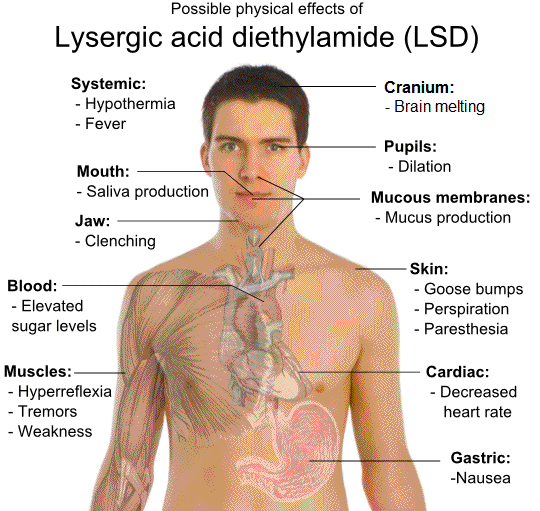What You Need To Know About LSD
Lysergic Acid Diethylamide which is commonly known as acid or LSD, is a type of psychedelic drug belonging to the ergoline and tryptamine families. Derived mainly from a kind of grain fungus known as Ergot, this recreational drug is known for its psychedelic effects. The early tribes in ancient Mexico have used this drug in their ancient rituals and this drug was often regarded by many as a spiritual drug because of its trance-like effects.
These trans-like manifestations would often include synesthetic distortions and spiritual, euphoric states for those who are under the influence of LSD. In other words, those who are high of LSD would often feel like they are in a whole new dimension far away from reality. In the case of synesthesia, the senses are all tangled up, that a person high from LSD would see sounds and taste colors. This drug can cause great psychological alterations known as trips while experiencing euphoria which is why the psychonauts use this as a form of entheogen for psychedelic therapy in the 1960's.
This type of drug is sensitive in the presence of oxygen, UV light and chlorine. Even though that is the case, its potency can last for years as long as this drug is stored in an opaque container and placed in a cool dry place. In its purest form, it is color less, odorless and it is mildly bitter when tasted. LSD is usually taken by mouth although it can be as potent when taken through other routes such as intramuscular and intravenous injections. Typically, its potency can be seen through shaking it in the dark. LSD has extremely fluorescent qualities and will glow bluish white when placed under UV light.

A single dose of this recreational drug may range between 100 to 500 micrograms which is pretty much equal to a mass grain of sand. LSD is extremely potent that its effects can already be felt in levels as low as 25 micrograms when these drugs are sold on the streets in minute quantities. It is said that lethal quantities of LSD range of LSD ranges 200 micrograms or more although there had been reports that there are no known cases of an overdose. However, other investigations have reported and otherwise claimed that there had been an incident that occurred in 1975, which led to one fatality in the form of an intravenous infusion of LSD.
The controversies behind LSD led to some misconceptions which are often stereotyped by the public. As a result, the mere mention of this drug often leads to social stigma paying attention only to its devastating effects; not its therapeutic qualities.
LSD despite of its controversial reputation is not just a street drug. This substance is primarily used as a pharmaceutical treat- ment for some psychological conditions. Most people are fearful that this drug would lead to the release of massive emotional outbursts and excessive aggression which are extremely dangerous. Contrary to some beliefs, LSD does not make you feel invincible. However, it has the ability to alter your psychological state. In cases of bad trips, dangerous symptoms would include paranoia, anxiety and feelings of impending doom.
Moreover, there is a fine line between the need for it as a form of treatment and the need for it to relieve addictive urges. This drug is only dangerous for people who think this is the only alternative they have left to feel happy when current troublesome situations get out of hand and become too overwhelming. This is when the misuse of LSD leads to substance abuse.
It is not the how much you take in, but the manner of how you take it in. If you use this drug correctly as a form of treatment, it can give you some therapeutic benefits. However, if you misuse its psychedelic properties, It will be very difficult for you to go back to a normal state of well being. Moderation is a must so consult your doctor about it.